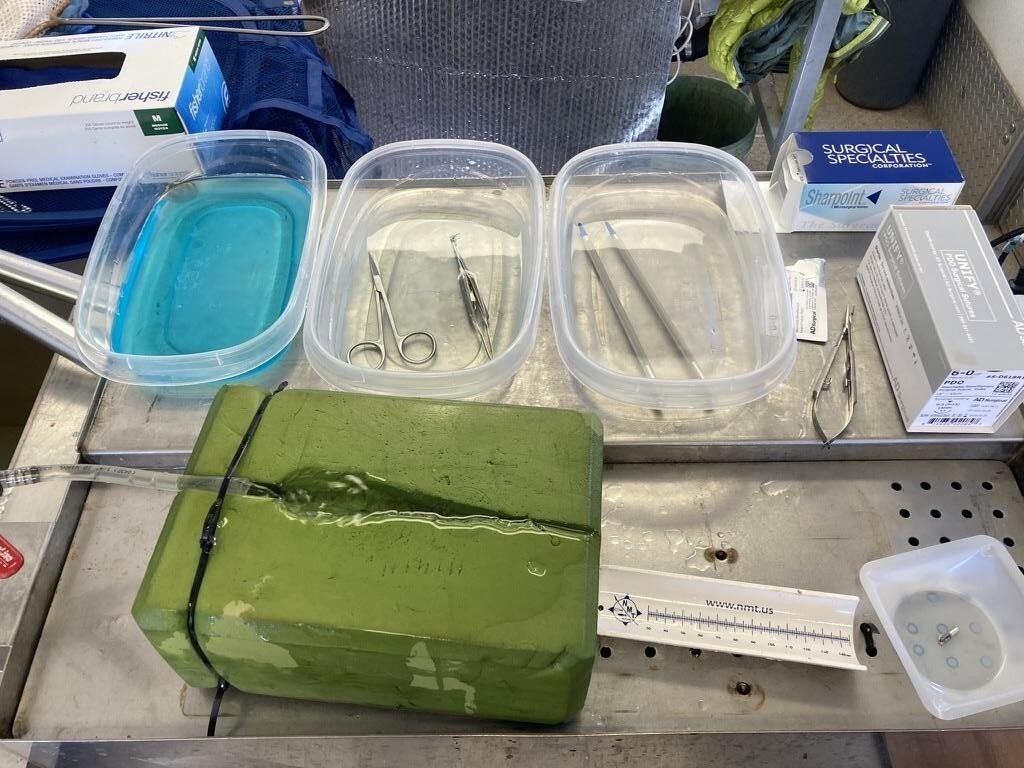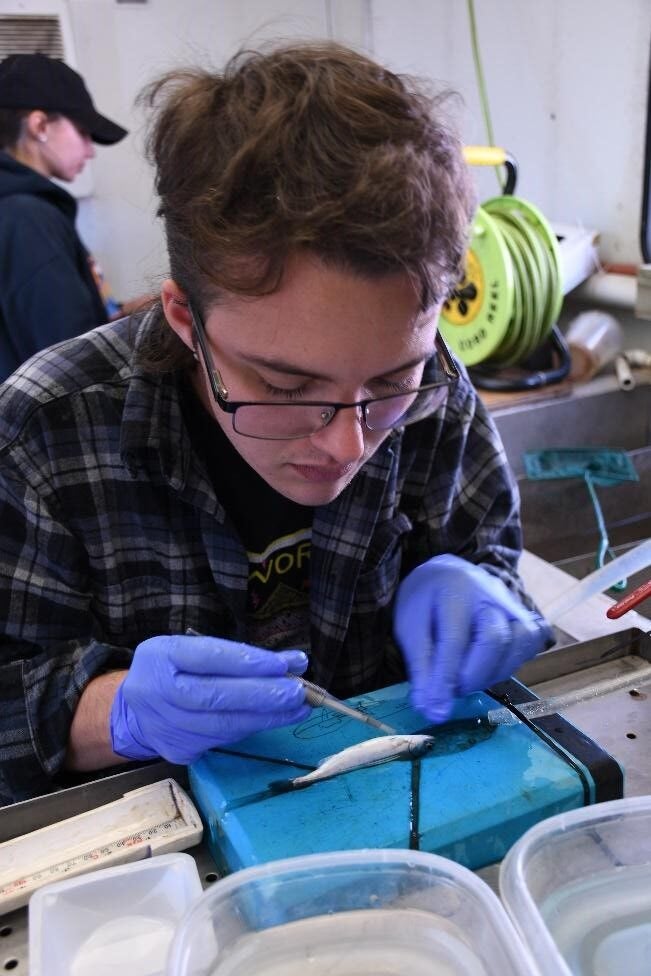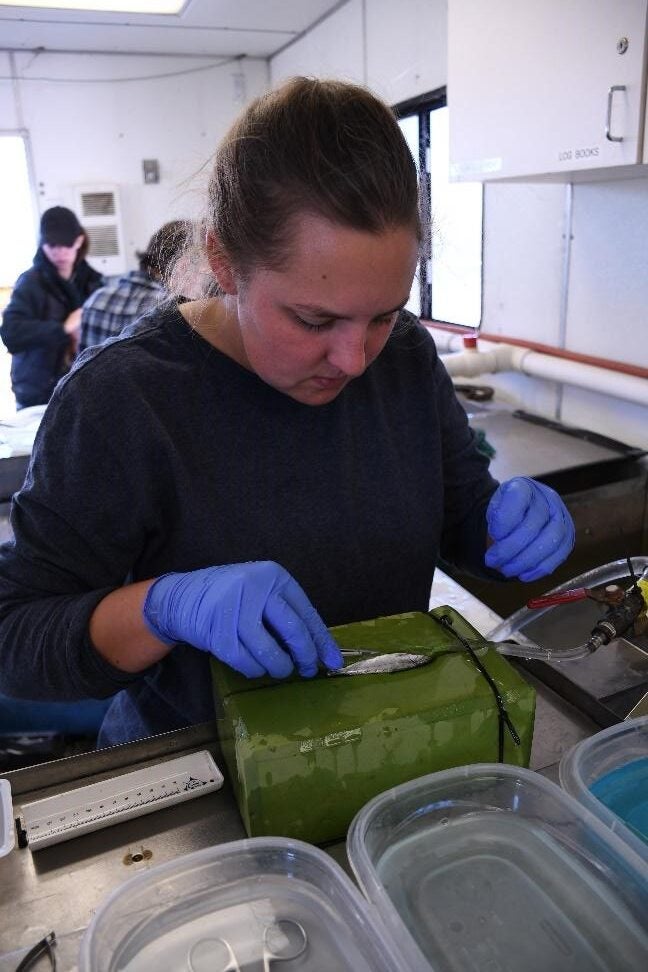Author: Amanda Peterson
Yet another year of tagging juvenile Spring-run Chinook salmon in the San Joaquin River has been successfully completed. The formation of the San Joaquin River Restoration program brought light to gaps in data on this run, and brought about a need for research on these juveniles. This study has been conducted with UC Davis since 2017 in order to understand the survival of Spring-run smolts, a threated salmon ESU, as they emigrate to the ocean.

In March 2022, a team of UC Davis junior specialists (Anne Boyd, Theo Claire, Mikayla Debarros, Sebastian Gonzales and Leanne Pearl) lead by Master’s Candidate, Amanda Peterson, surgically tagged 748 Spring-run smolts at the Salmon Conservation and Research Facility (SCARF) in Friant, CA. The fish were tagged with Juvenile Salmon Acoustic Technology System (JSATS) tags model SS400. These tags emit a sound at a frequency the human ear cannot hear but our telemetry receivers are able to recognize and distinguish unique tag IDs per fish. Genetic samples were taken for each tagged fish via caudal fin clips to be shared with a Berkley lab that will relate smolt survival and adult return with genetic information


Above: Junior specialist, Theo Claire (left) and Anne Boyd (right) tagging Spring-run Chinook salmon smolts with JSATS acoustic tags.
699 fish were released in March and are currently being tracked as they emigrate to the ocean. You can follow if they successfully arrived at the Benicia Bridge near San Francisco at this URL https://oceanview.pfeg.noaa.gov/CalFishTrack/pageSJSR_2022.html.
Below: Images showing the steps of surgically tagging Chinook salmon smolts with JSATS acoustic tags.





